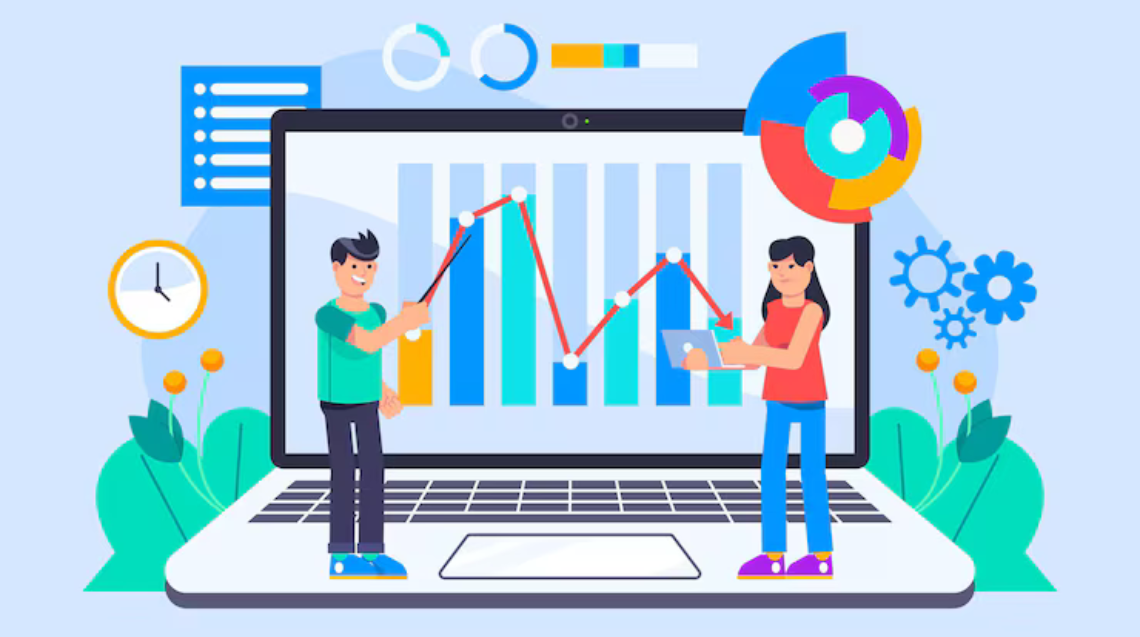Descriptive Statistics : Tools for Data Summarization
describing the main features of a dataset. It involves organizing, displaying, and interpreting data in a meaningful way, without drawing conclusions or making inferences beyond the dataset itself. Descriptive statistics provide essential insights into the central tendencies, variability, and distributional properties of the data, enabling researchers, analysts, and decision-makers to understand its characteristics more effectively.
Explanation of its Role in Summarizing and Analyzing Data
Descriptive statistics play a crucial role in summarizing and analyzing data by providing concise summaries and visual representations of its key features. This involves :
- Summarization: Descriptive statistics condense large datasets into manageable forms, making it easier to interpret and understand the information contained within them. By calculating measures such as the mean, median, and mode, descriptive statistics offer insights into the central tendencies of the data, indicating where most values cluster.
- Visualization: Graphical representations, such as histograms, box plots, and scatter plots, are commonly used in descriptive statistics to visually depict data distributions, patterns, and relationships. These visualizations enhance the understanding of complex datasets and facilitate the identification of trends, outliers, and potential relationships.
- Interpretation: Descriptive statistics provide a foundation for interpreting data by quantifying its variabilityand distributional properties. Measures like standard deviation and quartiles offer insights into the spread and dispersions of data points, while percentiles help assess relative positions within the dataset.
Importance in Data-Driven Decision-Making
- Informed Decision Making: Descriptive statistics provide decision-makers with factual insights into the characteristics and patterns within the data. By summarizing and analyzing data effectively, descriptive statistics enable informed decision-making based on evidence and empirical observations rather than intuition or conjecture.
- Performance Evaluation: In business and organizational settings, descriptive statistics are used to evaluate performance metrics, assess trends, and identify areas for improvement. By analyzing key performance indicators (KPIs) and benchmarking against historical data, decision-makers can make strategic decisions to optimize performance and achieve organizational goals.
- Risk Assessment: Descriptive statistics help assess and manage risks by quantifying variability and uncertainty within datasets. By understanding the distributional properties of data and identifying potential outliers or anomalies, decision-makers can anticipate risks, mitigate potential losses, and make proactive adjustments to strategies or operations.
- Resource Allocation: Descriptive statistics inform resource allocation decisions by identifying areas of high demand, resource utilization, or inefficiency. By analyzing data on customer preferences, market trends, and resource utilization patterns, decision-makers can allocate resources effectively to maximize efficiency and profitability.
Practical Applications of Descriptive Statistics
Descriptive statistics find wide-ranging applications across various fields, including business, healthcare, education, and social sciences. Some practical examples include:
Business
- Sales analysis : Descriptive statistics are used to analyze sales data, including measures sucha as average sales, sales trends over time, and regional sales variations.
- Market Research : Businesses use descriptive statistics to understand customer demographics, preferences, and purchasing behavior through techniques like customer segmentation and profiling.
- Financial Analysis : Descriptive statistics help in financial analysis by summarizing key metrics such as revenue, profit margins, and return on investment(ROI).
Healthcare
- Patient outcomes : Descriptive statistics are applied to assess patient outcomes, including measures like mortality rates, length of hospital stay, and treatment success rates.
- Epidemiology : Descriptive statistics aid in epidemilogical studies by summarizing disease prevalence, incidence rates, and demographic patterns.
- Clinical trials : Descriptive statistics are used to analyze clinical trial data, including baseline characteristics of study participants, treatment effects, and adverse events.
Education
- Student performance : Descriptive statistics are used to assess student performance, including measures such as average test scores, grade distributions, and graduation rates.
- Eduactional interventions : Descriptive statistics help evaluate the effectiveness of educational interventions and programs by analyzing student outcomes before and after implementation.
- Classroom Assessment : Teachers use descriptive statistics to monitor student progress, identify learning gaps, and tailor instructional strategies to individual student needs.
Social Sciences
- Public opinion surveys : Descriptive statistics are applied in analyzing public opinion surveys to summarize responses, identify trends, and make inferences about population attitudes and preferences.
- Demographic Analysis : Descriptive statistics aid in demographic analysis by summarizing population characteristics such as age distribution, gender ratio, and ethnic composition.
- Crime statistics : Law enforcement agencies use descriptive statistics to analyze crime data, including crime rates, types of offenses, and geographic patterns.
Impact of Descriptive Statistics on Decision-Making Processes
- Informed Decision Making: Descriptive statistics enable decision-makers to make informed choices by providing objective data summaries and visual representations of key metrics.
- Performance Evaluation: Descriptive statistics help evaluate performance metrics, assess trends, and identify areas for improvement, thereby guiding strategic decisionmaking to optimize performance and achieve organizational goals.
- Risk Assessment: Descriptive statistics aid in risk assessment by quantifying variability and uncertainty within datasets, helping decision-makers anticipate risks, mitigate potential losses, and make proactive adjustments to strategies or operations.
- Resource Allocation: Descriptive statistics inform resource allocation decisions by identifying areas of high demand, resource utilization, or inefficiency. By analyzing data on customer preferences, market trends, and resource utilization patterns, decisionmakers can allocate resources effectively to maximize efficiency and profitability.
Challenges and Considerations in Descriptive Statistics
Potential Pitfalls
- Outliers can significantly skew measures of central tendency and dispersion, leading to inaccurate summaries of the data.
- Skewed distributions can distort the interpretation of central tendency measures, especially the mean.
- Small sample sizes may not be representative of the population, leading to unreliable estimates of population parameters.
- Missing data can bias descriptive statistics if not handled properly, potentially leading to erroneous conclusions.
- Inaccurate or inconsistent measurement methods can introduce errors and compromise the reliability of descriptive statistics.
Strategies to Address Limitations and Biases :
- Conduct thorough data cleaning and validation
- Utilize robust measures of central tendency and dispersion, such as the median and interquartile range.
- Employ resampling techniques like bootstrapping.
- Conduct sensitivity analyses to evaluate the impact of outliers and assumptions.
- Use weighted measures to account for unequal sample sizes or survey weights.
- Transform skewed data distributions to normalize.
- Utilize robust visualization techniques like box plots or violin plots.
- Seek peer review and collaboration with subject matter experts.
- Report methods transparently for reproducibility.
- Continuously reassess and refine the analysis approach.
Encouragement to Apply Descriptive Statistics in Respective Fields
- Empower informed decision-making : By applying descriptive statistics, you have the power to transform raw data into meaningful insights that drive informed decision-making in your field.
- Unlock Hidden Insights : Descriptive statistics serve as the key to unlocking hidden insights within your datasets.
- Enhance Performance and Efficiency : In business, descriptive statistics can help optimize processses, improve performance, and enhance efficiency.
- Improve Patient Outcomes : In healthcare, descriptive statistics play a critical role in understading patient populations and improving effectiveness.
- Inform Educational Practices : In education, descriptive statistics provide valuable insights into student performance and instructional effectiveness.
- Drive Social Change : In social sciences, descriptive statistics help researchers understand societal trends and advocate for policy changes.
- Become a Data-Driven Leader : Proficiency in descriptive statistics positions you as a data-driven leader capable of driving innovation and achieving meaningful outcomes.
Conclusion
In conclusion, Descriptive statistics as a powerful tool for understanding, analyzing, and leveraging data in your respective field. By applying descriptive statistics techniques, you can unlock insights, drive decision-making, and make a meaningful difference in your organization, community, and beyond.

